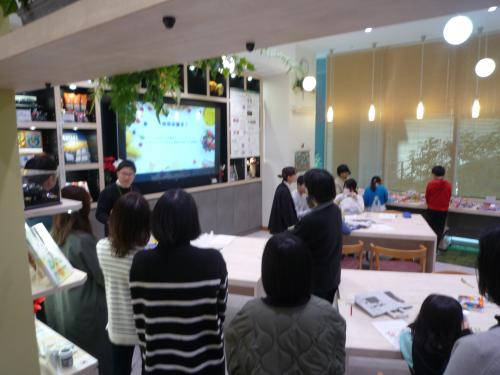Lecturers:
- Associate Professor Yu Tahara, Graduate School of Biomedical and Health Sciences, Hiroshima University
- Akiko Kimoto (Registered Dietitian), Visiting Researcher, Graduate School of Biomedical and Health Sciences, Hiroshima University
- Mana Yabumoto (Registered Dietitian), Master's Student, Graduate School of Biomedical and Health Sciences, Hiroshima University
- Yuma Tagashira (Registered Dietitian), Master's Student, Graduate School of Biomedical and Health Sciences, Hiroshima University
Support Staff:
- Graduate students from the Program of Public Health, School of Medicine, Hiroshima University
- Undergraduate students from the Department of Health and Nutrition Sciences, Faculty of Health Sciences, Hiroshima Shudo University
Sponsor:
On December 7 and 8, 2024, the 6th Hiroshima University Kitemin Seminar, "Chrononutrition × Snacks – Learn the Right Way to Enjoy Snacks with Products You Can Buy at Convenience Stores," was held at the Hiroshima University Kiteminsai Lab.
The seminar began with Associate Professor Yu Tahara explaining the purpose of the event. The participants were divided into four tables and started by introducing themselves along with the support staff.
In one corner of the Kiteminsai Lab, a mock convenience store was set up with a display of commercially available snacks.
Under the guidance of the graduate student lecturers, the participants filled out a worksheet with their daily schedules. They then selected two snacks from the mock convenience store, checked the packaging for nutritional information and calorie content, and recorded the data on their worksheets.
The instructors posed questions such as, "What is the purpose of snacks?" and "What are the three food groups?" The participants eagerly raised their hands to answer, recalling what they had learned in school or carefully thinking through their responses.
The participants were taught to choose balanced snacks by checking the ingredients listed on the packaging and applying the three-color food group system. They were also advised to limit their snack intake to 200 kcal per serving.
A quiz was held with questions such as: "Which foods are high in protein?"; "Which foods are rich in calcium?"; and "Which foods contain a lot of dietary fiber?" The participants enthusiastically answered while enjoying their snacks.
Based on what they had learned, they wrote down their snack selection goals on their worksheets. They then revised their daily snack choices to align with those goals.
The instructors explained that it is best to eat snacks by 5 p.m., at least two hours before dinner. They also discussed the best types of snacks to eat before and after exercise, considering the body’s digestion and nutrient absorption mechanisms. The participants were advised to opt for easily digestible snacks if eating after 9 p.m.
Additionally, the seminar included a clear explanation of how lactic acid bacteria and dietary fiber work together to promote gut health.
At the end of the seminar, Associate Professor Tahara gave a mini-lecture for the parents, explaining that chrononutrition is a field of nutrition science that incorporates the concept of "when" to eat.
He emphasized that nutrient efficiency varies depending on the timing of food intake. Using sleep duration data, he explained that children’s sleep patterns change as they grow older, particularly from the upper grades of elementary school onward. The data also revealed that girls tend to want more sleep compared to boys.
Tahara explained that the human body clock does not align perfectly with the 24-hour day, which is why people experience "social jet lag" on weekends. He highlighted the correlation between the body clock and breakfast consumption, encouraging parents to ensure that their children eat breakfast with the family every morning.
In his closing remarks, he stressed the importance of:
- Recognizing that sleep habits change from the upper grades of elementary school onward
- Ensuring children get sufficient sleep on weekdays and maintain a regular routine on weekends
- Including carbohydrates, protein, and dietary fiber in their diet
- Parents eating breakfast together with their children
As a parting gift, parents were given a leaflet from the Early to Bed, Early to Rise, and Breakfast Promotion Council along with fiber-enriched food products provided by Taiyo Kagaku Co., Ltd.

 Home
Home















